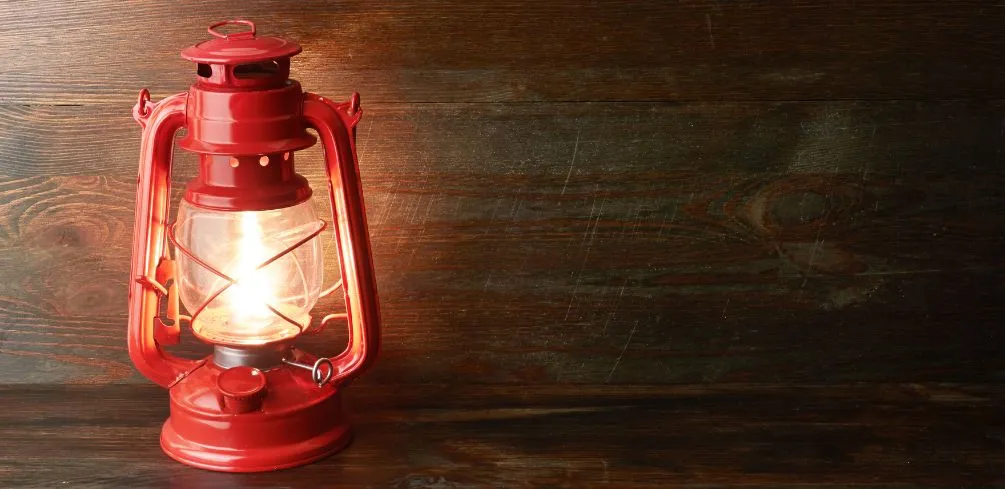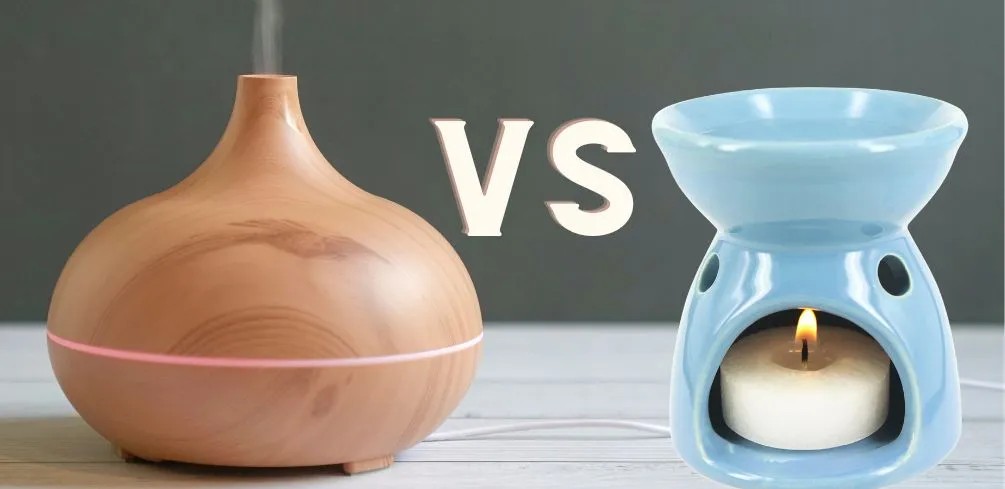An oil burner is an essential tool for many people, as it can be used to help with aromatherapy and relaxation. It’s also a great way to add fragrance or scent to any room.
With the right oils and some simple instructions, you can use an oil burner in your home easily. In this blog post, we’ll discuss what exactly an oil burner is, how you should go about using one safely and effectively, different types of oils that are suitable for burning in these devices plus their advantages & disadvantages.
Finally provide helpful cleaning tips so that your experience using an oil burner remains safe! So if you’re looking for more information on how to use an oil burner properly – keep reading!
What is an Oil Burner?
An oil burner is a device that uses an oil-based fuel to heat and create a flame. It can be used for many purposes, such as providing warmth in homes or heating water.
Oil burners come in several different types, including kerosene burners, diesel burners, and waste oil burners.
Definition of an Oil Burner: An oil burner is a device that uses an oil-based fuel to produce heat and create a flame. It is commonly used for home heating systems or hot water tanks but can also be used for other applications such as cooking or industrial processes.
Types of Oil Burners: There are several different types of oil burners available on the market today, each with its own unique features and benefits. The most common type is the kerosene burner which burns cleanly and efficiently using kerosene fuel; diesel burners use diesel fuel instead; while waste oil burners use recycled motor oils from cars and trucks as their source of energy.
One major benefit of using an oil burner over other forms of heating systems is its cost efficiency; it typically costs less than electric or gas powered models to operate due to the lower price per unit volume when compared with those fuels. Additionally, they are relatively easy to install since they don’t require any special wiring or plumbing connections like some other systems do – just connect them up directly to your existing pipes.
Finally, because they don’t rely on electricity, they will still work even during power outages, so you won’t have to worry about being left without heat during cold winter months.
There is also a version of oil burners that are a great tool to use for aromatherapy and can be used in combination with a fog machine, humidifier, or diffuser. Now let’s take a look at them.
Quick Takeaway: Oil burners are an efficient and cost-effective way to heat homes or water tanks. They come in three types: kerosene, diesel, and waste oil. Benefits of using an oil burner include lower cost per unit volume compared to other heating systems, easy installation with no special wiring or plumbing required, and the ability to still work during power outages.
How to Use an Oil Burner?

Using an oil burner is a great way to add fragrance and ambiance to your home. However, it’s important to understand the safety precautions and steps for setting up and using an oil burner before you get started.
Safety Precautions When Using an Oil Burner
It’s essential that you take certain safety measures when using an oil burner. Make sure that the area around the burner is free of flammable materials such as curtains or furniture.
Keep children away from the burning flame at all times, as they may be tempted to touch it or play with it. Additionally, never leave a lit candle unattended, and always extinguish it before leaving the room or going to sleep.
Steps for Setting Up and Using an Oil Burner
Before you begin using your oil burner, make sure that you have all of the necessary components on hand – these include a wick holder, wick, bowl/dish (to hold liquid), scented oils (optional), and matches/lighter (for lighting). Start by filling your bowl/dish with water until about halfway full, then add several drops of scented oils if desired.
Place your wick into its holder, then place this assembly into the center of your bowl/dish so that it rests in between both sides without touching either one directly. Light your match/lighter, then carefully light up the top end of your wick while holding onto its holder securely; let burn until extinguished naturally after use each time.
Tips for Maintaining Your Oil Burner
To ensure optimal performance from your oil burner over time, there are some simple maintenance tips worth regularly following, such as cleaning out any residue left behind in between uses; this can be done easily by wiping down both inside surfaces with warm soapy water followed by drying thoroughly afterward prior to refilling again next time.
Additionally, replacing parts like wicks every few months will help keep things running smoothly. Just make sure not to exceed manufacturer-recommended usage guidelines; otherwise, the damage could occur.
Using an oil burner is a great way to create a pleasant atmosphere in your home, but it’s important to be aware of the safety precautions and steps involved. Now let’s look at how to choose the right fog machine, humidifier, or diffuser for your needs.
Quick Takeaway: Using an oil burner is a great way to add fragrance and ambiance to your home. However, it’s important to take safety precautions, such as keeping the area around the burner free of flammable materials and always extinguishing it before leaving. Setting up an oil burner requires several components, such as a wick holder, wick, bowl (to hold liquid), scented oils (optional), and matches (for lighting). To maintain optimal performance from your oil burner over time, regularly clean out residue left behind in between uses and replace parts like wicks every few months.
Different Types of Oils to Use in an Oil Burner
Essential Oils for Aromatherapy
Essential oils are the most popular type of oil used in an oil burner. These oils are derived from plants and can be used to create a pleasant aroma in your home or office.
They can also help to reduce stress, improve mood, and promote relaxation. Examples of essential oils include lavender, peppermint, eucalyptus, tea tree, lemon balm, and rosemary.
Fragrance Oils for Scented Candles and Potpourri
Fragrance oils are synthetic scents that mimic natural aromas such as flowers or fruits. They are often used to scent candles or potpourri but can also be used in an oil burner to add a pleasant smell to any room.
Popular fragrance oils include jasmine, vanilla bean, cinnamon spice, citrus blossom, ocean breeze, and tropical fruit punch.
Carrier oils are vegetable-based liquids that dilute essential oils so they don’t irritate the skin when applied topically or inhaled through an oil burner diffuser device. Common carrier oils include almond oil, jojoba oil, coconut oil, olive oil, and avocado oil; each of these has different properties, which make them suitable for different uses depending on what you need them for.
Using the right type of oil in an oil burner is essential to get the desired results. Knowing which oils are best for aromatherapy, candles, and diluting will help you choose the most suitable one for your needs.
Now let’s take a look at how to use these oils in an oil burner safely and effectively.
Advantages and Disadvantages of Using an Oil Burner
Pros of Using an Oil Burner
Oil burners are a great way to add ambiance and scent to any room. They are relatively inexpensive, easy to use, and can be used with various essential oils.
The heat from the oil burner releases the scent of the essential oil into the air, providing a pleasant aroma that can help create a calming atmosphere. Additionally, they require minimal maintenance and cleaning since all you need is water or rubbing alcohol for wiping down surfaces after each use.
Cons of Using an Oil Burner
Although oil burners provide many benefits, there are some drawbacks as well. One potential issue is that if not properly monitored, they can overheat, which could cause fires or burns if touched without caution.
Additionally, depending on how often you use your oil burner and what type of oils you choose to use in it; residue may build up inside the bowl, making it difficult to clean thoroughly without specialized tools or materials such as rubbing alcohol or vinegar solution.
Finally, due to their open flame design, they should never be left unattended while in operation, which means having someone around at all times when using one is necessary for safety reasons.
Using an oil burner can be a great way to add moisture and scent to the air, but it is important to consider both the advantages and disadvantages before making a purchase. Next, we will look at cleaning and maintenance.
Cleaning and Maintenance Tips for Your Oil Burner
Cleaning the Wick and Bowl of Your Oil Burner
Properly cleaning your oil burner’s wick and bowl is essential for ensuring that it continues to work efficiently. To clean the wick, use a damp cloth or paper towel to wipe away any excess residue.
Be sure not to get the wick too wet, as this can cause it to become damaged. Once you have wiped down the wick, replace it in its holder and make sure that it is securely fastened.
For cleaning the bowl of your oil burner, use a mild detergent and warm water solution. Scrub gently with a soft brush or sponge until all dirt has been removed from the surface of the bowl.
Rinse thoroughly with warm water before drying completely with a soft cloth or paper towel.
Replacing Parts on Your Oil Burner
Over time, certain parts of your oil burner may need replacing due to wear and tear caused by regular usage. If you notice that any part of your oil burner is not functioning properly, it may be time for an upgrade!
Common replacement parts include new wicks, bowls, burners, filters, nozzles, and other components, which are easily available online or at hardware stores near you. Before attempting any repairs yourself, however always consult with an expert first, as some repairs require specialized tools which should only be used by experienced professionals who know how to handle them safely without causing further damage to your device.
When storing your oil burner after each use, ensure that all components are dry before packing them away in their designated compartments within its carrying case (if applicable). Make sure that nothing flammable such as aerosol cans or matches, are stored alongside them as these could potentially ignite if left too close together during transport/storage resulting in serious injury or damage is caused.
Therefore, always take extra precautions when handling combustible materials around open flames, such as those found inside an operating oil burning device.
Additionally, keep out of reach from children at all times – even when not in operation – just in case they attempt tampering with any exposed electrical wiring etcetera located on-board, thus preventing potential accidents occurring due to misuse or improper handling procedures being followed incorrectly, leading up towards hazardous situations arising thereafter.
By following these tips, you can ensure that your oil burner is in top condition and will last for many years. Next, we’ll look at how to replace parts on your oil burner.
Quick Takeaway: When using an oil burner, it is important to properly clean the wick and bowl regularly. Additionally, certain parts may need replacing over time due to wear and tear. To ensure safety when storing your oil burner, make sure all components are dry before packing them away in their designated compartment, keep flammable materials away from open flames and keep them out of reach of children at all times.
FAQs in Relation to “How to Use an Oil Burner”
Conclusion
With the right type of oil, you can enjoy aromatherapy benefits while creating a relaxing and inviting environment. Before using an oil burner, make sure to research the different types of oils available and how they can be used safely.
Additionally, regular cleaning and maintenance will help ensure that your oil burner continues to function properly for years to come. By following these tips on how to use an oil burner correctly, you can enjoy all its benefits without any worry or hassle!
Please be careful and use at your own risk
None of the authors, contributors, administrators, or anyone else connected with Wild Fog, in any way whatsoever, can be responsible for your use of the information contained in or linked from these web pages.








